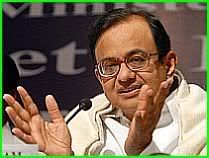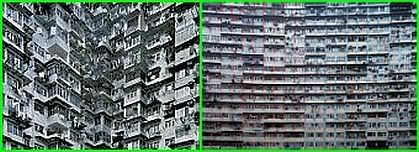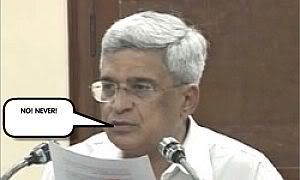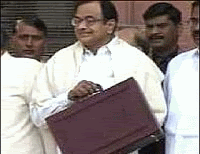Who is responsible?
How can such outrageous levels of housing prices be accounted for and who is accountable? Are these the fall-out of the much touted growth story? In reality, it is a massive failure to manage and control the situation much like the failure to control the general inflation. The failure is largely deliberate.
While it is tempting to attribute the high prices to the general shortage of housing, this is not the reason for the massive increases in recent times. Housing has been in short supply in Mumbai for decades and prices have been rising over the years. However, the increases have never been as alarming as in the last three years. Not surprisingly, even some builders and developers admit that the present levels of prices have no real justification.
The real blame for the sordid state of affairs and for the manner in which the Builders and Realty Developers have been enabled to exploit the situation to earn huge profits falls squarely on the Government and the political parties that are party to the Govt. Those in power have been acting recklessly, disregarding the interests of the people at large.
At the State level,
Vilasrao Deshmukh and party have been making a mess of the Housing situation by continuous manipulation of the relevant rules. The DC Rules, land and plot reservations, SRA, FSI, TDR, CRZ, ULC and a host of other administrative rules intended to ensure orderly development for the benefit of the people, have been used, bent and misused as devices to ultimately benefit only the builders and developers and their benefactors. The complex maze of rules and ways in which they are bent are even difficult to comprehend. Not just confined to this, politicians from many parties have also developed vested interests in the goose that lays the golden egg by becoming builders and developers themselves through proxies. When the representatives of the people running the State themselves partake in such mischief, the bureaucrats in the State Govt. and the Municipalities cannot be left behind in benefiting from the prevailing situation. Eventually, it is the hapless people who always end up paying the cost one way or the other, never the builders or the politicians.
The Centre…
While the actions of the State Govt. have been historically affecting the prices of land and Housing due to its authority in these matters, the impact of the actions of the Central Govt. in the last few years is not readily apparent. In particular, it is worthwhile analyzing the role and contribution of Chidambaram in giving a strong boost to the vested interests of the Realty sector.
In a recent interview Chidambaram had said: “behind every concession there is a strong lobby”, an admission that is quite appropriate considering how the builder lobby seems to have been receiving favorable treatment for the last few years as seen from some of his actions.
Housing Loan Interest
One area where Chidambaram has persistently focused his attention is that of interest on housing loans. He is seen repeatedly advising, directing, and even threatening banks either to maintain housing loan interest when interest rates are rising or to reduce housing loan interest when interest rates are stable. Whenever the real estate market turns even slightly stable, he is seen taking it upon himself to tell the banks to reduce interest on housing loans. The idea seems to be to ensure that the property market rise is sustained. Even now, when the RBI has signaled a rise in interest to contain inflationary expectations, our man in Delhi continues to pitch for lower housing loan interest at every opportunity.
In August 2006 he virtually threatened public sector banks to rollback interest rate increases even after RBI had clearly signaled a rise. He said, "It is necessary for the banks to consult their boards before revising lending rates as there are a number of aspects that need to be looked into after the central bank raised its benchmark rate last month... All that we have done is advise banks to place before their boards any decision on [lending] rates. [The] Government is a majority shareholder and there is a government nominee on the boards of the public sector banks.” When asked whether this would be interfering in the functioning of the banks, he said with his hallmark arrogance, “What is wrong in it?” At the same time, trying to cover his tracks and putting the onus on the banks, he also said that it was up to the banks to decide. If that were so, why did he resort to such arm twisting? Earlier in Nov. 2005 too he had said that he did not visualize rates going up for home loans in the near future. Again in Feb. 2007 he asked the public sector banks not to raise interest rates on housing loans though the property market was showing signs of overheating. He publicly disclosed "I am glad all public sector banks have agreed to hold interest rate on home loans at the current rate.” In Feb. 2008, he again urged the public sector banks to lend more to housing borrowers, saying that the banks should offer loans at affordable interest rates ‘to thwart a negative impact on the economy’ due to a slowdown in the credit growth. While clarifying that the govt. does not give directions to banks, he said that the centre was only trying to “sensitize banks to the demands of the consuming public and the prevailing situation”. (As if the banks are living in an outer world oblivious to what is happening). He offered a new alibi by stating in a conference in early March 2008 that ”I shall certainly bear in mind that there is public demand that interest rates for borrowers, who borrow (housing loans) up to Rs 20 lakh, must be lowered.” He talked of ‘incentivising borrowers’. ‘Public demand for lower rate’ was the new argument when just a few days earlier he had talked of ‘negative impact on the economy’. Again covering his tracks, he said “it is for the Reserve Bank of India (RBI) to take a call, for the banks to take a call”. Since then, he has called upon the banks to lower home loan rates three times in as many months. Trying to influence decisions by banks, he said in early May that public sector banks were unlikely to raise rates after the RBI hike in CRR and that “bankers were particularly happy that there has been some change in policy regarding housing loans... So, this means that the housing sector can expect higher credit flow without impacting the interest rates.”
What is objectionable if he tries to persuade banks? Well, first and foremost, all banks have to work in accordance with the prescriptions of RBI, the country’s monetary authority as well as the regulator and supervisor of the financial system. Second, even public sector banks are all public limited companies answerable to all their shareholders, not just the Govt. of India which is the majority shareholder as of now. They have their own Boards to set broad directions, supervise and control their functioning. The operations are handled by the managements who have to run the banks well keeping in view the competitive and market situation, earn profits and enhance shareholder value. They are responsible for their own working. The Govt.’s views, if any, can be presented by its nominee directors as permitted in the Boards of Directors. He has hardly a justification to short circuit this or ignore or bypass RBI. If the Ministry has a larger viewpoint, the same can be communicated to the RBI who may take it into account if it has merit. He has conveniently forgotten that the command and control system of yesteryears is history. Why then should he micromanage interest on home loans? He should not even be publicly commenting on interest rates, which is the domain of RBI. It is intriguing as to why he is freely making public the gratuitous advice given by him to banks on this specific subject? Perhaps, it is to influence and preempt the decisions of the banks and RBI by putting them under pressure. If he were not regarded as an honest minister, a less charitable explanation would be that the public announcements are an ‘action taken’ signal to those interested in such action being taken.
RBI, with a better view than Chidambaram on areas in its jurisdiction, has been setting policy guidelines including interest rates, sector risk weightages etc. as warranted.
In October 2006, for example, RBI tightened its lending norms for banks particularly in the real estate sector where funds were seen to be utilized for speculative deals. This tightening was in a sense offset by easier house loans at lower rates of interest. It is reasonable to assume that these funds eventually ended up being in the hands of the realty developers who were enabled one way or the other to have a steady flow of funds at their disposal. The RBI has also been trying to caution the banking system and indirectly the customer too about the risks of creating a bubble that may burst with overheating. The banks too have their ears to the ground and can do without advice or reminders from the FM on running their business.
Anyhow, one may ask, what is wrong in trying to make housing loans cheaper as it is a just cause and people are happy to get cheaper loans. Two main reasons may be advanced to justify his constant efforts in this direction. Firstly, he claims that housing is a ‘driver of growth’ and so needs to be promoted. Secondly, the common man needs affordable housing and so he should be given cheap loans. Q.E.D.! Even the Left parties may not be able to raise objections on this logic particularly when he talks of reducing interest on loans under Rs. 20 lacs. Our clever lawyer has then two ‘alibis’ to pursue his objective. But let us examine this further.
As to the first justification, no one can dispute that there is a large demand for housing and realty and these activities are profitable. But the country has come a long way in liberalization of the economy and is virtually a market economy where Businesses are free to go into any profitable areas. Those already entrenched in this sector and those who want to venture into it know this and are not lacking in resources. If some of them get out if they find the profits inadequate, others will come in. So, where is the scope and need for the State, much less Chidambaram on his own to ‘promote’ the sector by intervention? Moreover, it is still debatable whether housing can be considered a prime growth driver in India as in USA. Housing plays a very major role in the U.S. economy and may be a true ‘driver of growth’ there. USA is a mature economy and, perhaps, the scope of growth in other areas is not so high. On the other hand, it has a huge resource in Land with a land mass three times that of India and a population that is one fourth of India. So, housing is one sector in USA which impacts the growth of its economy significantly and there is a strong need also to prevent any slow down in Housing. In India, although Housing is very important, at this stage it can hardly be regarded a growth driver as important as in USA because there are many constraints, including infrastructure, to its growth. Many other sectors with fewer constraints may have a higher claim to be considered or promoted as drivers of growth. So, why single out housing for ongoing intervention by the State at the slightest pretext to provide artificial props? Is the country so vulnerable that the entire economy would slow down if the Housing sector even appears about to sneeze? If at all, intervention should happen only to prevent, not to support, exploitation of the customer and unjustifiable price rises. Larger and long term policy issues affecting orderly development of housing should have the attention of the State not micromanagement.
What about the second argument of making it affordable to take a loan? While the idea seems reasonable, it is the working of the entire home loan scene on the ground that needs to be considered. The overheated market with sky high prices has marginalized the average aspirant of a roof over his head. Even a veteran like Deepak Parekh of HDFC who has been cautioning about unrealistic prices, agrees that the average employed person has no chance to buy a house in Mumbai. So, does a cheap loan serve his purpose? At first glance, yes but when one analyses further the situation is different.

My options for Aam Admi


The fundamental point about affordable housing is that the cost of the house itself should be affordable. If the cost is not affordable, talking of reducing interest on home loans is just fooling the people into believing that they are being helped. When the house price itself is unjustifiably high, the customer ends up paying a lot even with lower interest. If the house is affordable, the interest may not even need to be lowered. What the buyer has to pay is not merely the interest but the principal cost too. So the Govt.’s effort should really be to drastically bring down the unconscionable prices rather than talking of relatively piddling interest element which in any case is relevant only for those who need to take and can take a loan.
Easier loans at a lower rate at this point in time in the given circumstances are seriously harming the larger interests of the consumer. The PM had earlier indicated in relation to inflation that there were supply constraints. The entire housing situation is also a supply side issue. First there is a genuine shortage and next, the supply that exists is offered at unjustified prices. There is a large unmet demand but at affordable price. There is resistance only because of the high prices which the builders want. If builders were to offer housing at affordable prices, people would buy. When demand already exists albeit at the right price, where is the question of ‘incentivizing’ borrowers or encouraging demand? Why should demand be fuelled when the problem is of supply? You are only ‘enticing’ a person to borrow and practically thrusting money into his hands to enable him to pay a higher price than warranted. It is to be noted that it makes little difference if the lower rates apply only to loans under Rs. 20 lacs. In many cases, loans are taken in such amounts to ‘top up’ the amount the borrower may have received from sale of his old property. The actual cost of new property may still be very high. In any case, even Rs. 20 lac is not a small amount and can impact the price spiral. So what is the actual impact of the home loan scene on the ground?
Firstly, an easier loan at lower rate acts as a device to break down the price resistance. Intending buyers are enabled to augment their own resources with borrowing to facilitate buying at the high prices. The easy loans actually result in FUELLING demand and that too at the unjustified price levels. Put differently, they provide external sustenance and stimulus to the price levels, not the supply. Facilitating people to take housing loan with lower interest does not help because a large part of the loan amount gets sucked into the artificial, inflated price and results in perpetuating a vicious spiral where purchases facilitated by loans continuously fuel higher price levels. The effect of a lower interest rate is simply to further shore up the already high demand artificially and create more panic amongst buyers, leading to still higher prices. Moreover, the average person cannot take a loan so easily when the housing is priced so high. This means that the ‘new economy’ high earners can preempt available housing, leaving out the average person.
Secondly, in a normal situation, the requirements of funds by producers/suppliers for business purposes have to be met from their own resources or by borrowing directly from the banks at commercial rates with repayment responsibility. Both have a high cost. When low cost funds in large amounts are placed in the hands of customers in a diffused manner, it results in a clever transfer of resources from the banks to the realty sector through the end customer. The builder gets funds virtually free and the customer pays the interest over a period with risks attached to non-repayment.
Thirdly, the larger funds available with the developers due to the unreasonably high prices, enables them to indulge in speculative covering. More importantly, it tremendously increases their holding capacity. The larger developers can almost indefinitely hold out without reducing their prices till they find customers at their price. The same happens with investors/re-sellers who anticipate higher prices by holding out.
Fourthly, the huge and sudden price increases fuelled by easy loans have simply made it possible, even necessary, for builders to increase the cash component in the price of an apartment. The cash component in the total price, an average of 40% is as high as 70% in several cases. The price increases have been so abnormal that the builders do not find it necessary or desirable to reflect the full price in the official transaction. This is the stark reality and Chidambaram's Ministry has been certainly aware of the extent of cash transactions in realty business.
Fifthly, many borrowers who might be able to purchase a house largely from their own resources are tempted to take the loans. Their own resources are then profitably deployed in the stock market or for further purchase of property for speculative purposes. Thus, a huge indirect transfer of bank funds to the stock markets takes place to fuel stock prices.
Sixthly, many investors are also tempted to take loans for speculative buying of houses for future sale, which again reduces the supply for genuine first time buyers, also pushing up prices.
As of 31st March 2007, a sum of Rs. 230,689 crores was deployed by commercial banks for housing loans, to which close to Rs.35,000 crores would have been added by now. Considering what has been stated earlier, relatively large amounts out of the total sum of Rs. 265,000 crores might have found their way indirectly to finance stock exchange or other speculative (including real estate and housing) activities. The net result of this can only be guessed. Even if a large part of the loans have genuinely been confined to the housing sector, they have stimulated the high prices and the extent of windfall profits of the builders and developers can be only imagined. What may be happening is that sectors that need cheap credit to expand productive activities may not get enough, while those who thrive on market manipulation and speculative activities may take advantage of the cheap housing loans availed by their customers to increase their own profits. In this context, it is worth noting that a working group constituted by RBI in 2005 to review priority sector lending norms had suggested removal of housing from the purview of priority sector lending .
Whatever the pundits and armchair advisers may think, the ground reality is that an easy loan regime in the given circumstances may be self-defeating and have the potential of wrecking further havoc on the situation of housing prices. Finally, should some unfortunate circumstances result in a slow down in the 'new economy' sectors and those who have taken loans find themselves unable to meet their repayment obligations, the resultant distress would cause much pain. Most likely, our whiz may not be there to face the situation and the mess would need to be cleaned up by his successor.
An incidental issue that may be raised by some relates to re-development projects. In the case of many re-development projects the developers pay fancy prices to the exisitng owners/occupants. Does that not increase their costs? Well, it does, but that reflects in the prices at which they sell the new development leaving their windfall profits intact as the prices constantly race ahead. On the other hand, the owners who have sold out have a short lived satisfaction of getting a high price compared to their original cost. Short-lived, because a large part of what they get is invested in buying a new house at the prevailing price levels. Considering the existing capital gains tax rules, the high capital gains have to be necessarily invested in housing to save on the tax. Once again, this feeds the fire of rising prices overall.
In the present scenario, nothing less than a sharp jolt will achieve the type of correction that is necessary. Can anyone believe that the Govt. has any commitment and will take any action, let alone apply its mind to this problem? We seem to have a Finance Minister who is unaware of what is happening or chooses to ignore the problems it creates for genuine buyers – the Aam Admi- and closes his eyes to the windfall profits - a kind of unjust enrichment - of the builders and developers. Whether he understands the consequences of his actions or does not, he may well be remebered for his contribution in taking the house prices to the high levels from where a retreat to realistic levels seems well neigh impossible.
Cement Prices
The other area where he has been trying to personally poke his nose bypassing the concerned Ministry is the issue of cement prices. The common man is suffering most due to the rise in cost of his daily necessities. Chidambaram, our maven in Delhi, keeps saying that all steps would be taken to check the inflation. And guess on which area does he personally focus? Out of 435 items that are comprised in the WPI, he picks on two items- CEMENT and Iron & Steel, both being inputs for the builders. Granted that every product group whose prices are rising should receive attention and granted also that the prices of these two items have been rising, what is needed is immediate succor for the common man. Will a reduction in prices of these two items alleviate the immediate suffering of the common man? No! The price index for cement went up between 5.5.2007 and 3.5.2008 from 211.6 to 220.8 i.e. by 4.35%, actually lower than the increase in all commodities index which went up from 212 to 228.6. What is the weightage of Cement in the
WPI calculation? It is 1.73105 of 100. So how much has the price increase of cement over the last year impacted the overall WPI AND also the day-to-day cost of living? A little more than a goose egg! Yet, time and again, this is the one item that he has been picking on and leaning on the producers to reduce its prices.
In 2007 after the budget, he had told the cement makers to pressurize them:” We have information how much your sales have increased, how much your PBT has increased, how much your PAT has increased. So you should come forward with some proposals” The cement makers, however, refused to toe his line.
Once again this year, he took it upon himself to single out cement and steel, particularly the former, to focus on and to get the cement producers to reduce the prices. In April this year, he threatened the cement (& steel) makers with tough administrative measures if they did not end their cartel like behavior and exploiting consumers (read builder lobby). He pleaded with apex bodies of chambers of commerce and industry to ask the cement and steel companies to cut prices. He even made the allegation of ‘cartelization’ in Lok Sabha which was promptly denied by the concerned Ministry in the Lok Sabha. Even thereafter, he has persisted with the allegation and threatened actions. Earlier, even in his Budget Speech, he had referred to “oligopolistic tendencies in the cement and steel sectors.” He is now in the stage of ‘persuading’ the industry to cut prices adding that “I have made it very plain, that, if they (cement manufactures) do not voluntarily cut the prices, we are prepared to take administrative measures”. After the cement makers agreed to reduce prices to an extent, he said on 16.5.08 that “there is scope for significant reduction in cement prices.”
The price of cement has been his pet subject which he raked up even as far back as 2000 and 2001. (see here and here) To be fair, no one can deny that price increases in such basic products as cement and steel need to be under check as they would also eventually affect new infrastructure projects. Steel prices also have a cascading effect due to its importance in industrial production as well. This fact is exactly what provides the ‘alibi’ that the clever lawyer needs. No one can, therefore, object to what he is doing because everyone thinks it is a good cause. But the point still remains as to why the Finance Minister of the country is personally so keen on pursuing the subject himself rather than leaving it to the administrative Ministry concerned. Assuming that the swan song of reducing cement prices is out of a noble desire to reduce the burden on the common man; can any reduction in cement prices be expected to lead to lowering the cost of housing? It is difficult to believe. The lower price will simply add to the obscene profits of the realty developers and builders. This is because today’s high prices of housing are decided less by costs of cement or normal laws of economics and more by the greed of the builders and support from the powers that be that enables them to milk the people. It is not denied that the steel and cement makers are hiking prices to exploit the demand-supply gap. But they also know full well the extent of windfall profits being made by their main customers, the builders and developers by fleecing the end users. The exploitation of the market applies with much more force to the prices of housing. If he is indeed concerned for the people at large, should he not focus his crusade rather on the builders and developers to force them to cut prices?
Incidentally, the price history of cement reveals some interesting facts. Over a period of four years between Dec. 2000 and Dec. 2004, the price index actually showed a decline from 151.6 to 149.3. Within a few months of the new Govt. coming to power, in just one month between Jan. 2005 and Feb. 2005 the index spurted by 8% ending with 10% in Dec. 2005. It jumped a whopping 20% from Dec. 2005 to Dec. 2006. Again, it jumped 11% from Dec. 2006 to Dec. 2007. An intriguing question arises is that if he was so much concerned about cement which was one of the five products under special watch, how did he allow the prices to increase for two full years 2005 and 2006 in the first place under his watch as Finance Minister? Was he twiddling his thumb waiting for prices to go up further?
In any event, while Chidambaram's zeal on cement prices is not objectionable per se, it does appear that it is the builders who will gain a lot out of any reductions he secures, as these will simply not make any noticeable impact downstream on housing prices.
Other policy areas affecting realty prices
There are other areas of Central Govt. policies like FDI in real estate and capital gains tax provisions that have a bearing on the high prices of real estate and housing but these are better considered in a separate discussion.
In conclusion
The builders and developers have raked in thousands of crores in the last few years due to the spurt in housing prices helped by friendly powers that be. In spite of his rhetoric of reducing inflation, as far as Housing prices are concerned, the FM is unlikely to lift a finger to achieve any significant reduction considering his actions so far. He is generally regarded as an honest minister unlike some others and it would not be right to suggest that his actions are deliberately intended to favor the builders and developers. One thing is sure, however, that his actions are being brought into question and he is fast losing his credibility. If he can do with some gratuitous advice, it is this: Having done enough for his pet subjects he should rather focus on doing whatever he can to actually bring down housing prices. Or quit. Using his own words, “it is for him to take a call”.
And all those who talk of making Mumbai into Shanghai should first focus on reducing housing prices, never mind the cosmetic makeovers.




 Mulayam Yadav :"Support Congress?" "mmblmmblnotenemymmbljmblpoliciesmblmmbl3rdJuly"
Mulayam Yadav :"Support Congress?" "mmblmmblnotenemymmbljmblpoliciesmblmmbl3rdJuly"












